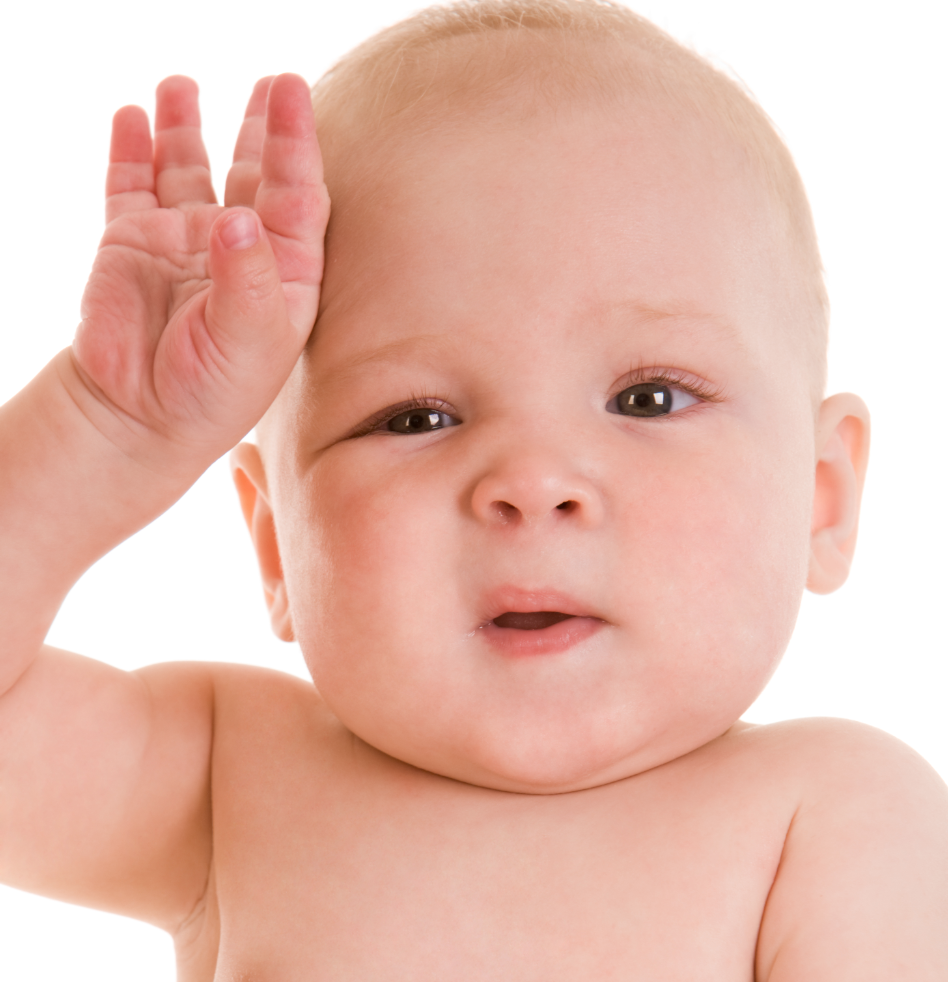Babies move a lot during sleep, and they even grunt and cry while their brains are sleeping. In fact, they are so active that all babies would be sleepwalkers…if they could walk.
The reason behind all their activity is that muscle paralysis doesn’t become part of the REM (rapid-eye-movement) sleep stage until around 6 months of age. REM sleep is a period of muscle paralysis in adults, but not so in babies. When an adult doesn’t have paralysis during sleep, they have a sleep disorder and have been known to sleepwalk, or even fight in their sleep. But during baby REM sleep, sucking motions, smiles, frowns, and irregular breathing aren’t a disorder, they are typical. So your baby might seem to be restless, when it’s really just normal (baby) REM sleep. Some babies are very sensitive to being moved and will wake easily when they are in this stage, so you may have to wait a few minutes until they are in a deeper sleep to lay them down.
Facts to put you to sleep: Newborn babies show far more REM sleep than adults—80 percent of sleep time versus about 25 percent in adults. Whereas adults fall asleep and progress through a predictable pattern of sleep stages, infants fall directly into rapid-eye-movement (REM) sleep. They may seem fidgety and restless when you first lay them down, but this doesn’t necessarily mean that they are awake. Don’t pick your baby up immediately, give her a minute and see if she settles down.
As for when they sleep, babies don’t develop a circadian rhythm until about 3 months of age. Which means that they don’t sleep according to the time of day like we do. Babies sleep whenever they want, just like they did in the womb. Therefore, it would be very inaccurate to say that any baby in the first three months of life has a sleep problem; it’s really the parents’ problem. Babies are sleeping the way they are supposed to, and it’s every parent’s rite of passage to just put up with it. Eventually every baby will transition and join the rest of us by sleeping for many hours in a row, at night!
There are a few things you can do to help them along. Keep the room dark at night. When your baby wakes during the night, keep the lights low. Expose your child to natural light during the day. And establish a consistent bedtime routine like rocking in the same chair and singing softly every night at the same time. These tips will help them learn the difference between day and night and help them transition to a more humane schedule. A baby’s body will start making cortisol and melatonin when they are 2 or 3 months old and then they will be able to respond to those light cues and develop a sleep pattern that is more similar to ours.
But they will still be loud and move a lot. So, don’t stay up late listening to your baby make loud noises and move around, they aren’t going anywhere.
More sleep tips at Secrets of Baby Behavior







Luckily when your baby is that young you are so exhausted you probably sleep through all their normal sleep noise. 🙂